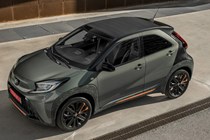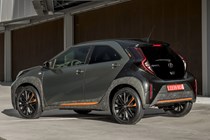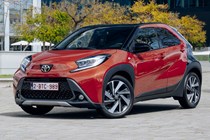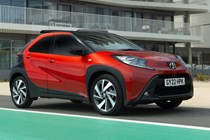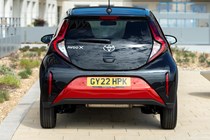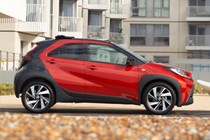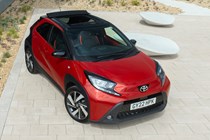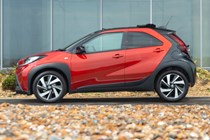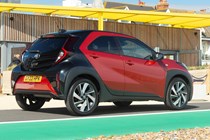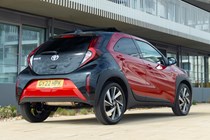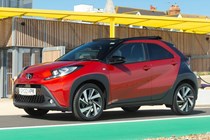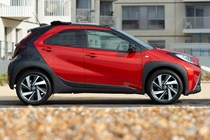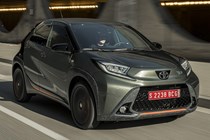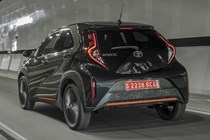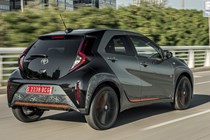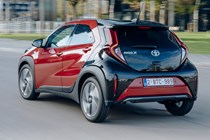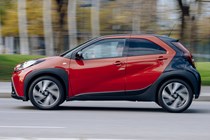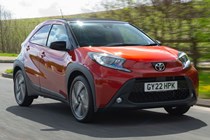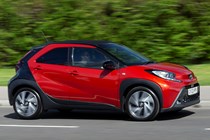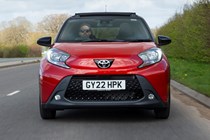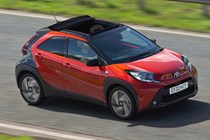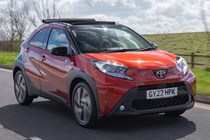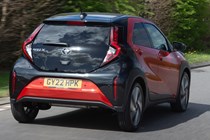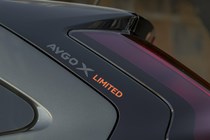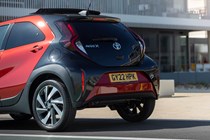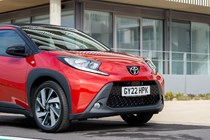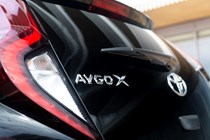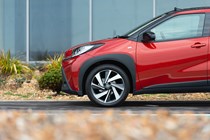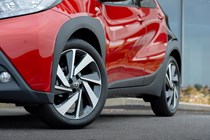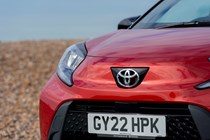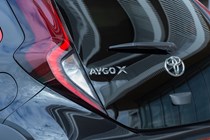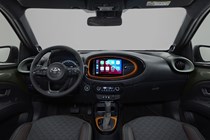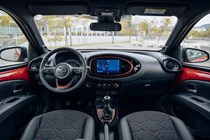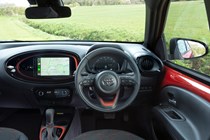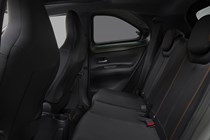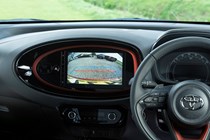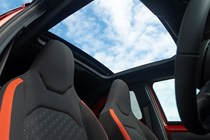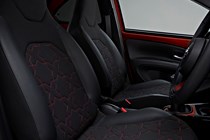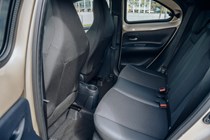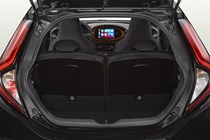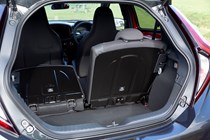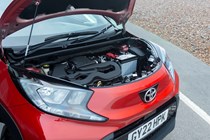
Toyota Aygo X long-term test
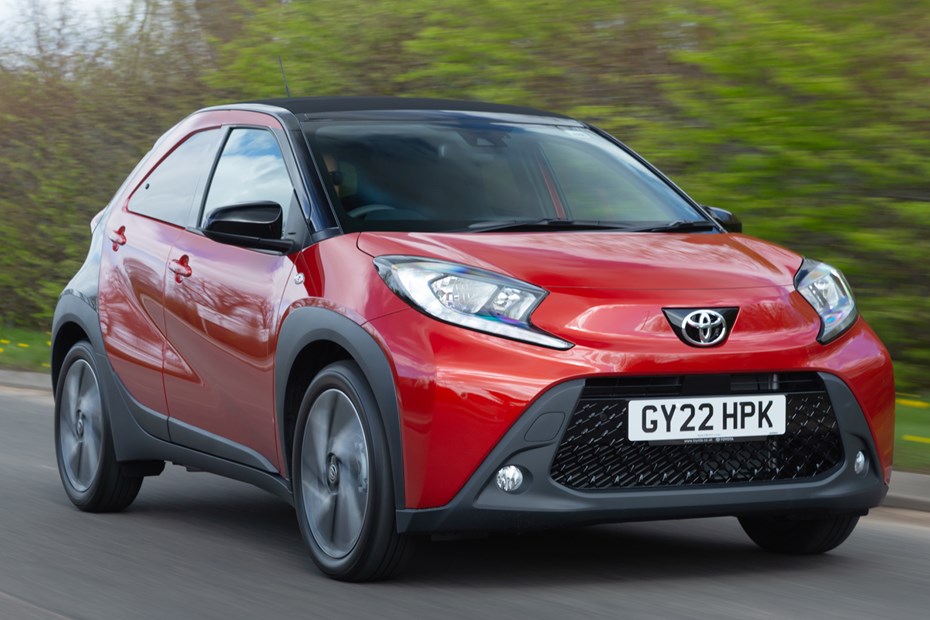
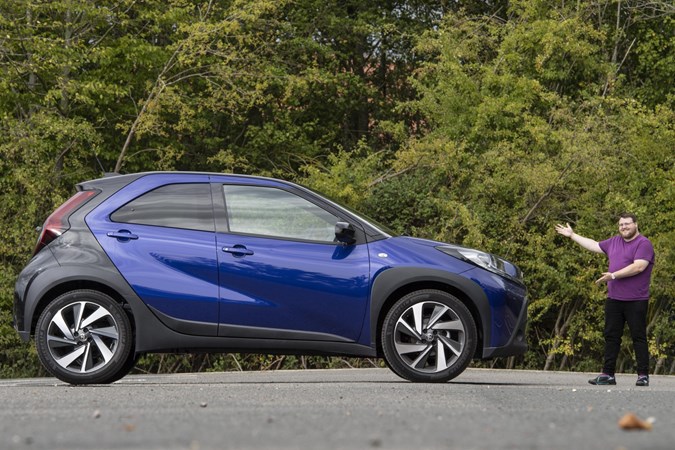
We’re living with the Toyota Aygo X for a few months to see what it’s like as a daily driver. Reports by Tom Wiltshire
Click the links below to jump straight to the report you’re interested in, or scroll down to read them all
Report 2: Our Toyota Aygo X has a dinky 1.0-litre engine with just 72hp – is that enough to get by?
Report 4: My learned colleagues from CAR Magazine take a crack at the Aygo – mixed feelings abound
Report 1: Welcome
Tom Wiltshire gets to grips with a brand-new city car, but this tiny model has some big-car features to talk about
If you were thinking of a market sector to axe in the current economic climate, where belts are being tightened and trips to the petrol station put off for as long as possible, you’d probably get rid of supercars or luxury SUVs. But the opposite is happening, and sales figures for the cars at the top are better than ever – while sales figures for the smallest models, the city cars, are dwindling.
In fact, in a class that was once enormous with representation from almost every manufacturer, the city car market in the UK now contains just seven cars – excluding the much more expensive electric options. There’s the Fiat Panda and 500, which first saw the light of day in 2011 and 2007 respectively. There’s the Volkswagen Up, which dates back to 2012.
The Suzuki Ignis is younger, having been launched in 2016, but a quirky oddball destined to remain a fringe seller. At the top of the class, the Kia Picanto and Hyundai i10 – sister models launched in 2017 and 2019, riding on a mature platform and sharing sensible, frugal engines.
And then there’s this – the Toyota Aygo X. Rather than being a joint effort with Peugeot/Citroen like the last two Aygos, this is Toyota going it alone. And we’ll be seeing just how good a job it does flying solo as we take charge of this 1.0 Edge model for a few months.
Don’t make me Cross
Pronounce the Aygo X’s name correctly. It’s actually pronounced Aygo Cross.
Similar to the Yaris Cross, then, which is actually called the Yaris Cross and not the Yaris X. A little consistency would be nice here, Toyota!
The spirit of the name, though, is to suggest that this Aygo isn’t just a boring old city car but is actually an ultra-compact SUV in the same vein as the Fiat Panda Cross (argh) or the Suzuki Ignis. To that end it’s covered in black plastic cladding around the wheelarches, and rides on vast (for a city car) 18-inch wheels, like all the best compact SUVs.
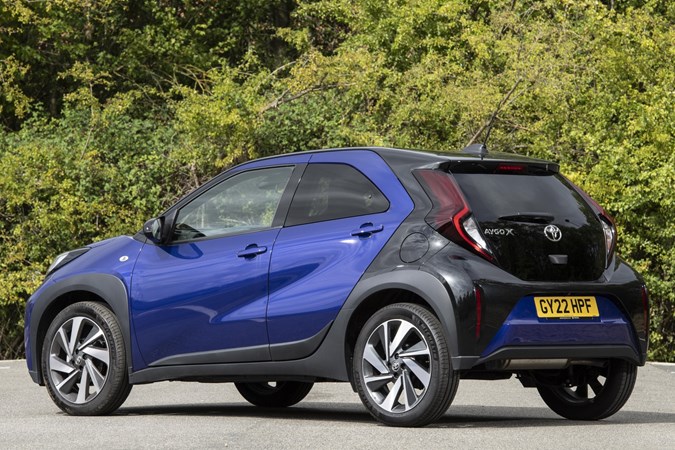
That’s not the only aspect of the Aygo X that seems to have been pilfered from a larger car. The list of driver assistance equipment is extraordinary, and includes not just the prerequisite autonomous emergency braking but adaptive cruise control and lane-centreing tech that still isn’t standard on some models two classes above.
That’s right – this tiny creature basically has the same level of semi-autonomy as most premium SUVs. I’ll be interested to see how well it takes the sting out of long drives as we put this car through its paces over the next few months.
So which Cross do we have here?
We’ve been very sensible, considering the Aygo X range goes up above the £20,000 mark at the top end. Our mid-spec ‘Edge’ car comes in at a much more reasonable £17,105, or just £159 per month on a 42-month PCP with around £4k deposit.
For that, you get the attractive Juniper Blue bi-tone paint scheme – mirrored on the inside with blue flashes on the seats, doors and dash – plus 18-inch alloy wheels. Equipment includes the aforementioned safety kit as well as a surprisingly full roster of reversing camera, climate control, fog lights, privacy glass, auto headlights and wipers, and an eight-inch infotainment display complete with Apple CarPlay and Android Auto.
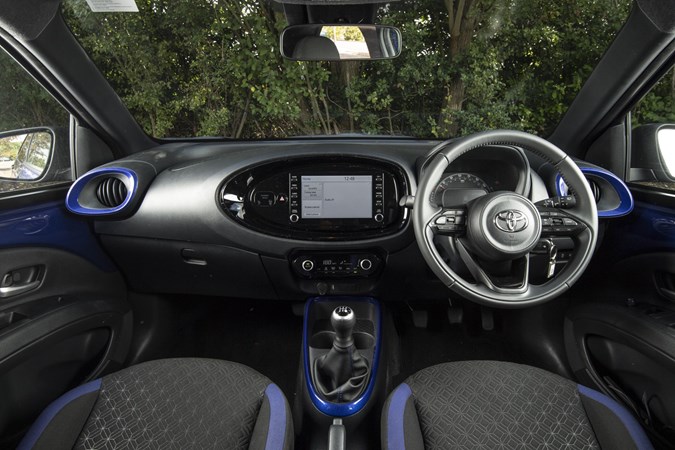
The options list does contain one thing we wish our car had – the full-length canvas sunroof, at £895. Otherwise, though, it’s difficult to think what more you could want on a car this small.
Except more power…
Yes, that. With just 72hp the Aygo verges on painfully slow at times. I personally don’t have an issue with it (both my personal cars are much slower) but other members of the team have commented on the car’s glacial pace when joining sliproads, overtaking or travelling with more than one person in the car.
It’s certainly true that on longer trips I’ve forgotten what I’m in and put my foot down expecting… well, something to happen, and being surprised when it doesn’t. It’s also true that the dinky little 1.0-litre engine and five-speed gearbox have already taken a bit of a beating, as you need to verge on thrashing this car if you want to set off from the line at pace.
It’s a pleasure to do that, though. The gearbox has a pleasingly snickety action and the Aygo X lends itself to being chucked through the corners – a product of that ‘wheel-at-each-corner’ stance that makes most tiny cars such fun to drive.

One thing I have noticed, though, is a curious flat spot in the power delivery – what little there is – at around 3,500rpm. I can’t blame it on the engine being new, either, as the car’s done almost 5,000 miles now. Maybe after a few more weeks with the car I’ll be subconsciously driving around it.
The final plus to having such a dinky car? Fuel economy. Even driving it on the proverbial doorhandles, the Aygo X stubbornly refuses to dip below 52mpg indicated. Driven more sensibly, 60mpg is easily achievable. You can’t really argue with that.
Fact sheet
- Model: Toyota Aygo X Edge Manual
- Price as tested: £17,105
- Performance: 72hp. 0-62mph in 15.6s, top speed 98mph
- WLTP fuel economy: 57.7mpg
Report 2: Power crisis
Our Toyota Aygo X has a dinky 1.0-litre engine with just 72hp – is that enough to get by?
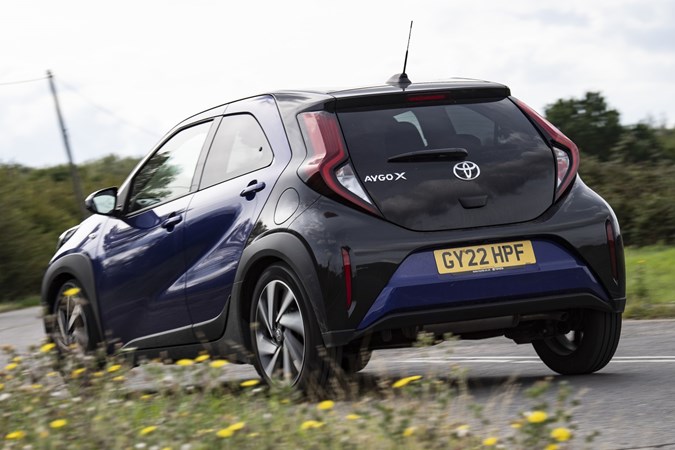
A few miles into our stewardship of the Toyota Aygo X and I’m finding myself fully attuned to the car’s lack of power. That doesn’t mean I’m especially enjoying it, though.
The Toyota’s 1.0-litre, naturally-aspirated (non-turbocharged) three-cylinder petrol engine puts out a puny 72hp and just 93Nm of torque. These numbers do look low when you consider a lot of relatively pedestrian family hatchbacks have over double the power output, but among city cars, they’re not actually too low.
The Volkswagen Up trails the Aygo X for power and torque, as do the Fiat 500 and Panda, while the Hyundai i10 and Kia Picanto offer slightly less power and slightly more torque. Among company then, the Aygo X’s numbers stack up.
But what about in the real world?
In normal driving, the Aygo X feels slower than all of its rivals – significantly so. Despite the 0-62mph time on paper being competitive, in-gear acceleration just feels glacial, as does the car’s pickup off the line. The engine’s torque – what little there is – doesn’t arrive very low-down in the rev range either, so getting off with any sense of urgency requires quite a lot of fire and fury.
This isn’t really a huge problem around town, but it is noticeable when you head out onto faster roads. Trying to merge onto a motorway from a short sliproad is a noisy and sometimes slightly panicked experience, while overtaking on a country lane is best saved for very long straight stretches.
But how much of a problem is this, really?
It’s actually not a huge problem if you simply adjust your expectations. Drive without aggression, take it a little easier and don’t expect to be able to overtake slower-moving traffic without some planning and the Aygo copes just fine.
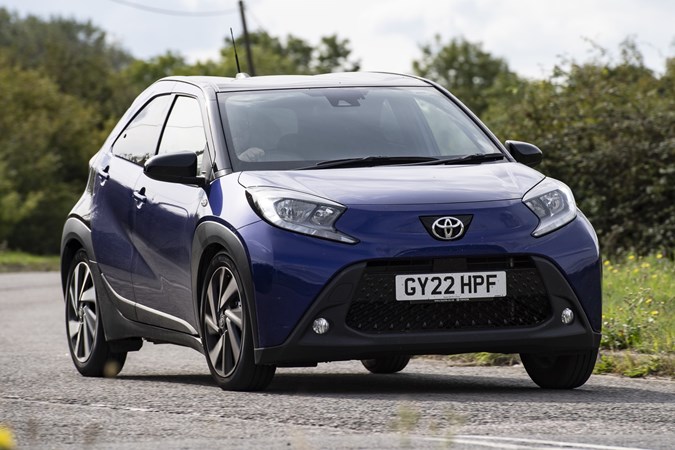
The idea that the Aygo is ‘dangerously’ slow has been floated to me and I find it a bit laughable. It’s quicker than a lorry, after all, and they mingle with traffic every day. So, as a matter of fact, do tons of slower-moving vehicles – the fact the Aygo just takes a couple of seconds longer to reach motorway speeds is really a minor issue.
And it has to be said, it’s a surprisingly comfortable motorway cruiser – when you get there – with those massive, 18-inch wheels giving a much more big-car ride than I’d expected.
Mileage: 4,208 miles
This month’s economy: 54.2mpg
Report 3: Dinky doors and junk in the trunk
Our long-term Aygo X is not a large car, but is it practical enough for the lonely and childless?
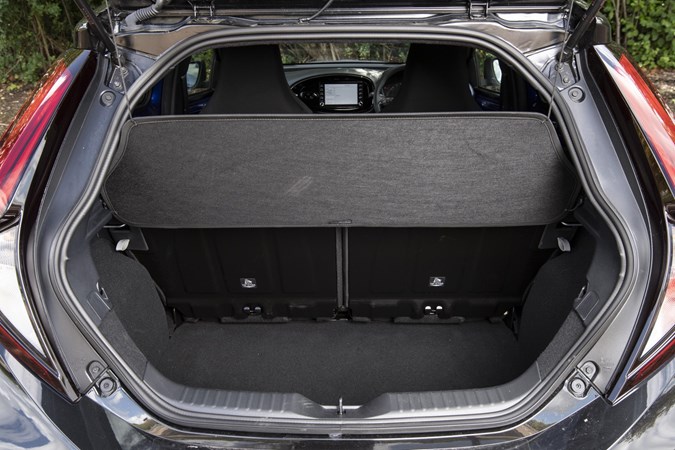
I’m single with no kids, so I rarely get to use the back seat of my long-term test cars – and since I’ve had the Aygo, I’ve taken to borrowing larger vehicles if I need to carry anything large, like flat-pack furniture or eBay purchases.
It’s a tactic many Aygo X owners might want to employ, because even by the standards of the class this is not a spacious city car.
Let’s start at the blunt end and discuss the boot. While the figure of 231 litres doesn’t sound too far down on rivals like the 255-litre Kia Picanto, the space itself is poor. It’s a very deep boot, thanks to the high-set sill and small tailgate, and the opening is narrow, so not only do you have to hoick large items high in the air before dropping them down but you’ll also have to manoeuvre them through a tiny opening.
The back seats do go down easily, and sturdy metal backing means you don’t need to risk damaging the upholstery if you sling something dirty or sharp on their folded backrests. But even with these down, the space on offer isn’t vast – certainly not compared to squarer rivals like the VW Up or the Suzuki Ignis.
What’s life like for the backseat driver?
Speaking of tiny openings, just look at the Aygo’s rear doors. Not only are they miniscule, they don’t open very wide – and that means that if you’re generously proportioned like yours truly then getting into the rear is a frustrating exercise.
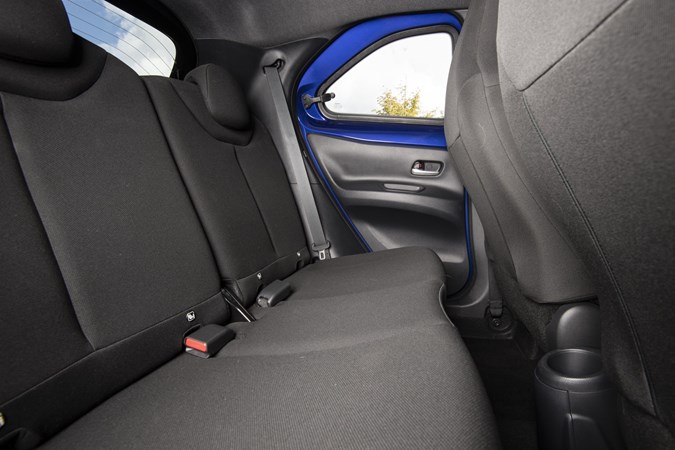
Certainly, fitting child seats back here isn’t something I’d enjoy doing, as they’d be difficult to even get through the door let alone contort yourself to secure it in and safely buckle the small person in place.
I have ridden in the back, but this was only possible behind my 5ft4in mother, who had the front seat pulled way forward. Even then, legroom wasn’t exactly capacious – and it highlighted that not only is headroom in the back at a premium, even in this hard-top model, but that the rear of the Aygo X is incredibly claustrophobic thanks to dark upholstery, the low ceiling and tiny, tinted rear windows.
As a result I can’t possibly recommend the Aygo X to anybody who carries passengers in the back more than, say, twice a year. Which is a shame when rival cars, such as the Hyundai and Kia twins and the Suzuki Ignis, provide genuine space for four six-foot adults in pleasant if not exactly palatial surroundings.
Mileage: 4,950 miles
This month’s economy: 56.1mpg
Report 4: The CAR perspective
My learned colleagues from CAR Magazine take a crack at the Aygo – mixed feelings abound
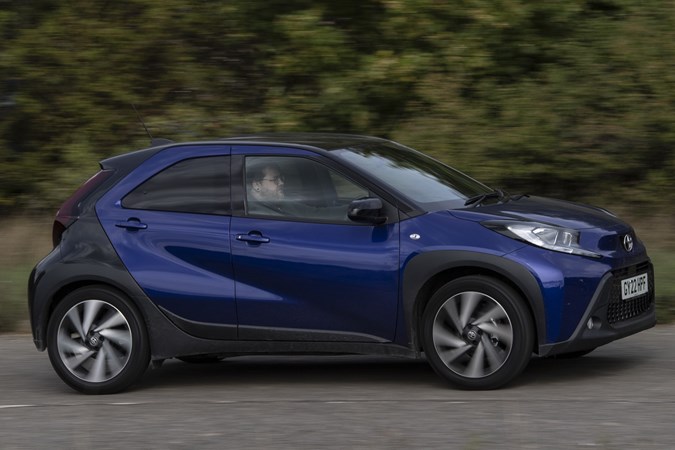
I’ve been quite busy with other test cars this month, but two of my colleagues over at our sister publication CAR found themselves without wheels – and my Aygo X was available to step in. CAR is much more focused on performance cars and exotica than we are, so I wondered how they’d enjoy living with the Aygo’s lack of power and budget beginnings. Over to Deputy Features Editor and part-time racing driver James Taylor for the first stint…
“Original Aygo I loved, lots of character, but I was less keen on the second one. This is the first time I’ve driven this generation.
“Toyota Aygo X (is it pronounced ‘Aygo Cross’ or ‘Aygo Ex’?) because of course, everything has to be a crossover now. I think it wears its chunky arches and plastic cladding okay, but the nature of a city car pretending to be an SUV is always going to smack slightly of inauthenticity.
“I think it’s perfectly fine to drive. The steering is nice and linear – albeit really light, but then it is a city car. The turning circle is great and it’s easy to park, so two big ticks in the ‘fitness-for-purpose’ column there. The gearchange I find a bit baulky going from second to third and the gearing is really long, I guess for fuel economy, but that does accentuate just how slow the car feels.
“Good that is has a rev counter – not all small cars used to, of course – and the reversing camera is a bit of big-car tech, too. Couldn’t see anything much out of it, though, as it gets covered in winter road grime.
“The angular exterior is a bit at odds with the swoopy interior styling. That same horrible touchscreen as other Toyota models but I like the kind of ‘portal to the netherworld’ it’s housed within in the middle of the dash, and I also like the 3D instrument panel behind the wheel. Smacks of cheapness that the touchscreen has nav capability and a map button but it’s not connected.
“Since you have to connect your phone by cable, not wirelessly, it’s a bit annoying that the phone tray won’t fit my phone in it if it has a cable sticking out of it, so I have to put it in the cupholders instead.
“One thing I’ve noticed driving it in icy low temp conditions, it beeps a warning at you to say the roads may be icy, which is fine. But it waits a few seconds after you’ve started driving off to do it, usually while you’re busying looking around through the windows as you’re manoeuvring out of a parking space or driveway. While your eyes are off the instruments, looking outside of the car, it emits a high pitched beep which made me jump on the brakes first couple of times I heard it – thought it was a parking sensor or a warning and I was going to hit something.
“I find this a much nicer car than the last one, and feels more grown up and refined than both previous models. First one had lots of character and was a clever design (visually and engineeringally – not a word) but was really hard work on a long journey. I’d much rather do a long motorway trip in this car than the last Aygo, too.”
James also mentioned that his girlfriend, who’s in the market for a small car, was very taken by the Aygo. A few ticks, then, but he’s also highlighted some niggles that I’ve noticed, such as the phone tray being too small and the reversing camera getting dirty.
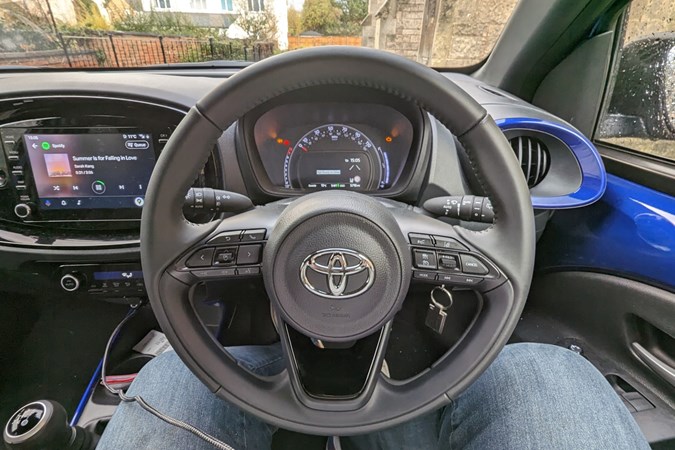
Over to CAR’s managing editor Colin Overland, who took a much less sympathetic view…
“For context, I covered the launch of this car in Barcelona, which was notionally pre-production prototypes, but in reality the real thing. Had an agreeable few hours, chuntering around town and in the hills, some of it with the canvas roof [which my car doesn’t have] open, so quite pleasant. Even so, it was obvious that the car was wildly underpowered.
“Driving it again now, in the less hilly environment of Northamptonshire, it feels if anything worse. I don’t have a problem with slow – I’ve owned plenty of slow cars and been perfectly happy with them – but I do have a problem with a car that feels constantly out of kilter with itself.
“Engine and transmission and steering and handbrake all feel like they’ve not been in any way calibrated to work together. Also, the audio is rubbish, completely unable to overcome the rattly body’s own noise. And everything feels like it’s made of the cheapest possible materials.
“My various passengers, who’ve put up with some turds over the years, all took particular exception to this car. Especially the wibbly-wobbly ride quality, and the fact that the rear door openings are so awkward and the rear windows don’t open.
“Although I like the styling, I think it’s true to say the X offers NO improvements over the old Aygo.”
Colin may have just talked himself out of a Christmas card from the Toyota press office with that one.
It’s always interesting to hear other people’s perspectives on a car – they often flash up issues I’d never have noticed, or praise things that I’m not a fan of. It’s also interesting to see the result on average fuel economy, which has taken a definite tumble after a month of my heavy-footed consociates…
Mileage: 5,820 miles
This month’s economy: 51.1mpg
Report 5: Progress?
Memories of our tester’s first car have us wondering if there’s been any meaningful change in the last decade of city car development
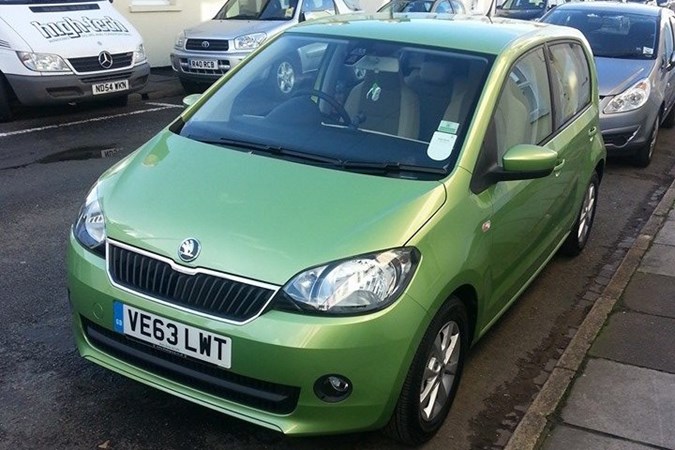
Aren’t Facebook memories great? Well, for now – I’ve not posted anything meaningful on there in about five years, so sooner or later it’ll run out of memories from my teens to show off to me. But today it came good and reminded me that it’s nine years since I took delivery of my first, and so far only brand-new car.
While I’d been driving my sister’s Peugeot 306 for a year after passing my test, I wanted wheels of my own. And though I’d previously never have considered a brand-new car, this was 2014 – when Skoda would happily sign over a Citigo to a 20-year-old on a zero deposit, 0% APR PCP deal.
My inability to say no to anything on the options list meant I’d gone for the top-spec car, too, so I had sat-nav, heated seats, front foglights, autonomous emergency braking and ivory cloth upholstery to my name. All for an insanely reasonable £171 a month.
Comparing this, almost a decade ago, to my current Toyota Aygo X makes me a little sad – as not only are city cars much more expensive now, I’m not convinced they’re hugely better.
The numbers don’t add up
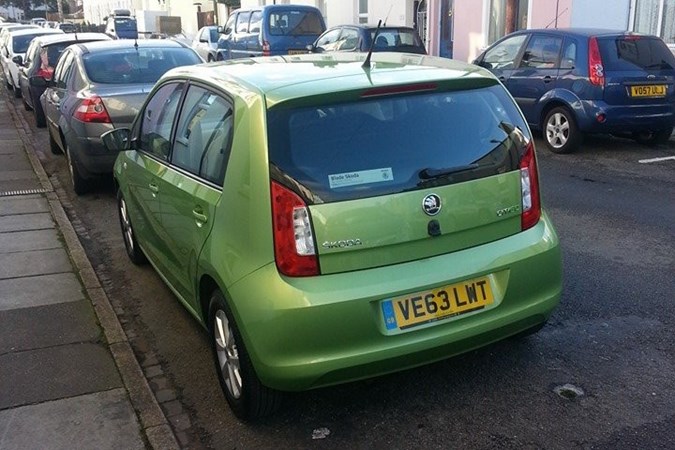
Let’s put the 2022 Aygo X next to my 2014 Citigo.
The Aygo is slower, managing 0-62mph in 14.9 seconds, compared with 14.4 for my Citigo.
The Aygo is less efficient – while I can see around 60mpg if I’m driving carefully, my Citigo would regularly top 65mpg with ease.
The Aygo is more expensive. Prices for a base-spec model start from just shy of £16,000. Back in 2014, a base-spec Citigo was under £8,000.
There are other things that are harder to quantify but just as easy to see. The Aygo’s way smaller in the rear, with tiny back doors. While the Citigo was no limo, you could sit six-footers in the back – and they could see out, thanks to good-sized rear windows. The Citigo was more comfortable, despite its tiny wheels – it was more fun to chuck around too, with supple suspension and natural-feeling steering.
Comparing starting prices is a little reductive, considering the base-spec Aygo X is vastly better-equipped than a base-spec Citigo was in 2014. So let’s compare the two cars I’ve actually run.
I paid £171 a month on a 42-month PCP deal for my Citigo – no deposit, no interest. It was a 60PS Elegance GreenTech model – the top trim level with the cheaper of two engine options. I also added the Safety Pack, which brought a primitive sub-20mph AEB system, and the Entertainment Pack, with four extra speakers for the stereo.
‘My’ Aygo is a mid-spec Edge. Things are pretty even on the kit front, with my Citigo’s heated seats and built-in sat-nav compensating for the new car’s adaptive cruise control and smartphone connectivity. If you wanted to match the £171 a month payment, Toyota would demand a £3,742 deposit from you – and charge 6.9% APR to boot. Pretty spendy in comparison.
It’s not just a Toyota problem
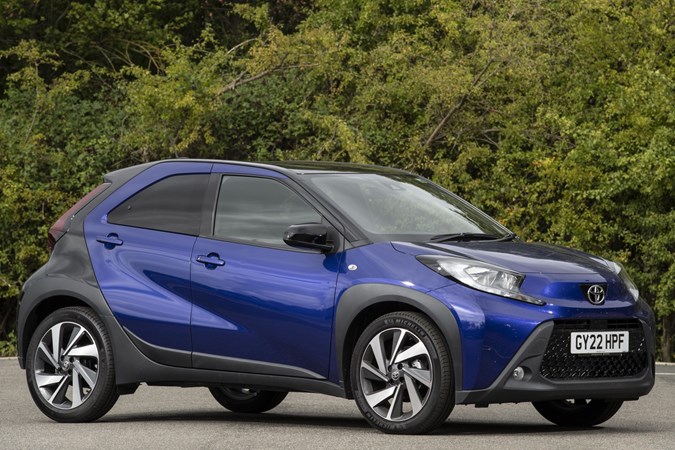
I sound very critical of the Aygo here, but in truth it’s a criticism that can be levelled at almost all its current city car rivals, though in some cases to a lesser extent. Progress in cars has been concentrated in profitable market segments – like compact SUVs, which have undergone a huge transformation since 2014 – and emerging segments such as electric cars. City cars just aren’t profitable, or a big enough chunk of the market to concentrate on. And I reckon that’s a shame.
The sheer number of Aygo Xs I see on my travels through Peterborough and beyond suggest there’s still a massive appetite for a car that’s safe, well-equipped and reliable without being huge. New drivers, retired people, those who struggle to park large cars or even those who just don’t want to overcompensate for their modest needs – these are all people who suffer with reduced choice at the lower end of the market.
Still, the loss of choice is Toyota’s gain, as fewer cars for people to buy means more of them will inevitably end up on the doorstep of their local Toyota dealer.
Mileage: 6,050 miles
This month’s economy: 57.4mpg
Report 6: Ay-going, Ay-going, Ay-gone (X)
The Toyota Aygo has left the Parkers long-term test fleet – but how was six months with the UK’s newest city car?

It’s always quite telling when a car goes back to its manufacturer after a stint on the Parkers long-term test fleet, and we tally up just how many miles we’ve undertaken in it. In the case of the Toyota Aygo X, that number is 2,758 miles – or just under 460 miles per month.
We usually find long-termers are usually much closer to the UK national average mileage of about 12,000 a year, and the Aygo’s covered a little less than half of that. What does that mean?
I think it shows two things – firstly, the nature of a city car versus the journeys we do, and secondly, how pleasant it is to do those journeys in the Aygo X.
Short car, short journeys
The Aygo X proved perfect for the kind of journeys I think most owners buy them to do – short jaunts across town. I live just outside Peterborough and most of my social life goes on in the city centre – so I spend a lot of time driving in and out. The 10-mile or so trip takes me about 20 or 30 minutes usually, and that’s a sweet spot for the Aygo.
I’ve actually seen a lot of them pootling around Peterborough, from the top-spec Exclusive marked out by its LED lights right down to Pure models in white with their more basic alloys. The Aygo X saw some real sales success in the UK last year, troubling the top 10 sales list a couple of times. It just goes to show that a small, reasonably cheap car – sold with Toyota’s legendary customer service, reputation for reliability and aftercare – is something people want to buy.
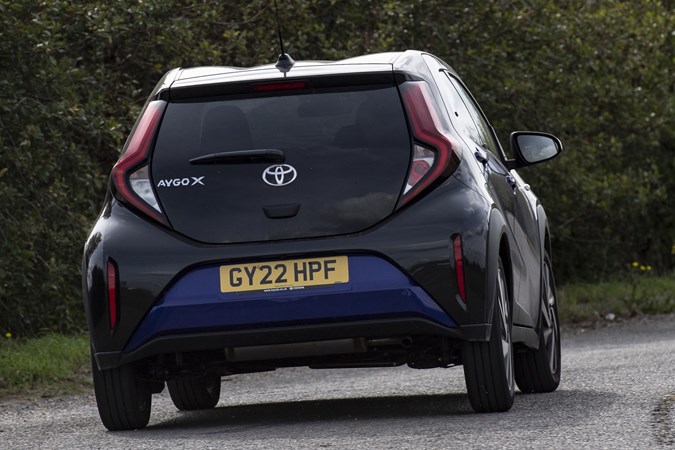
The problem I had is that my journeys are often further afield – airport runs, journeys home to see my parents or cross-country to see friends. It’s on these journeys that the Aygo’s lack of grunt and motorway manners show through – and it’s why I’ve defaulted to using alternative cars for those kinds of journeys, keeping the Aygo’s mileage down.
Would I buy one?
No, but it’s a shame that I have to say that. The Aygo X is too cramped, too tinny, too slow and too expensive – especially when you put it next to cars such as the Kia Picanto, which feel much more like a big car scaled down.
If Toyota sliced a chunk off the Aygo’s price, fitted it with an engine that felt like it had a modicum of urgency, and upped the quality of the interior fittings, I reckon it’d have much more of a chance.
In the meantime, though, genuinely excellent safety equipment and an unparalleled reputation for dependability should keep sales buoyant – I’ve no doubt there’ll be plenty of people with unchallenging needs for whom the Aygo X is a perfect city car.
Final mileage: 6,286 miles
This month’s economy: 58.1mpg



